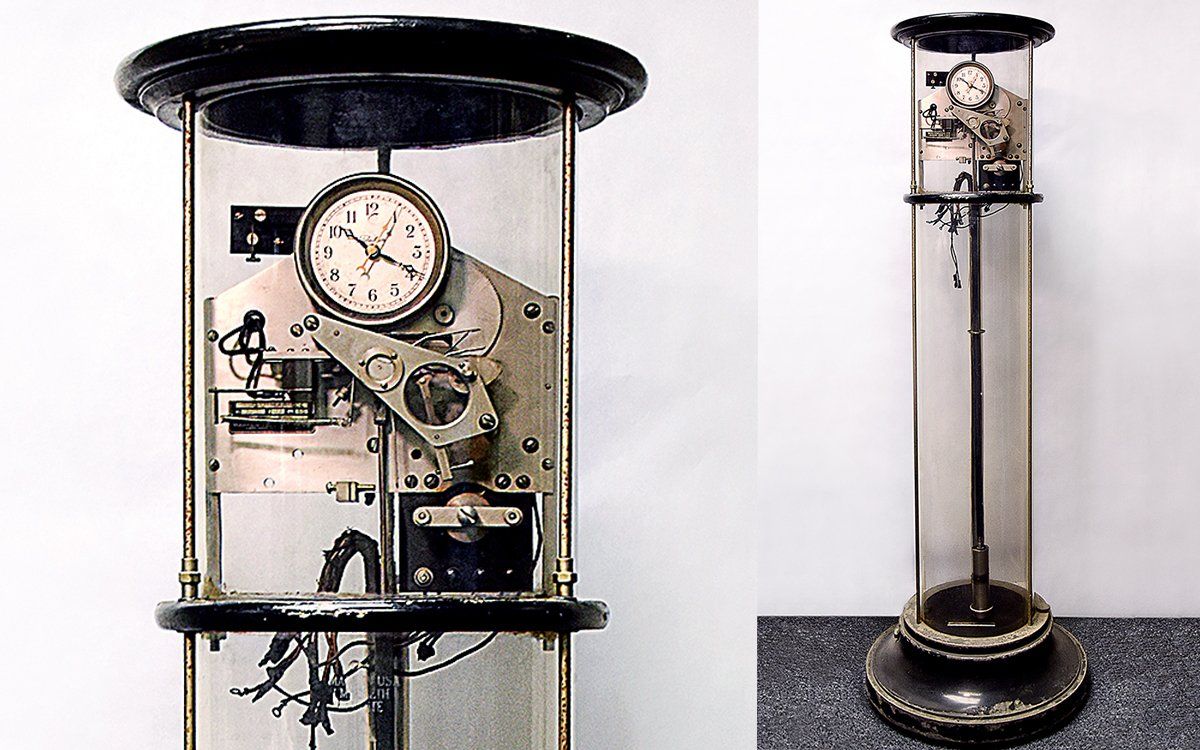On 23 October 1916, an engineer named Henry E. Warren quietly revolutionized power transmission by installing an electric clock in the L Street generating station of Boston’s Edison Electric Illuminating Co. This master station clock kept a very particular type of time: It used a synchronous self-starting motor in conjunction with a pendulum to help maintain the station’s AC electricity at a steady 60-cycle-per-second frequency.
As more power stations adopted the clocks, the frequency regulation allowed them to share electricity and create an interconnected power grid. Until the late 1940s, station clocks from the Warren Telechron Co. regulated over 95 percent of all U.S. electricity lines. The Telechron Model Type E master station clock shown at top was used at the Tennessee Valley Authority beginning in the 1930s.
The 60-hertz standard (or 50 hertz in most of the rest of the world) is taken for granted today, but in the early days of electrification—before the invention of the master station clock—the standard was seldom standard. And Warren, who eventually solved the grid-frequency problem, was actually working on a different puzzle when he came across the answer.
How Warren’s clocks regulated grid frequency
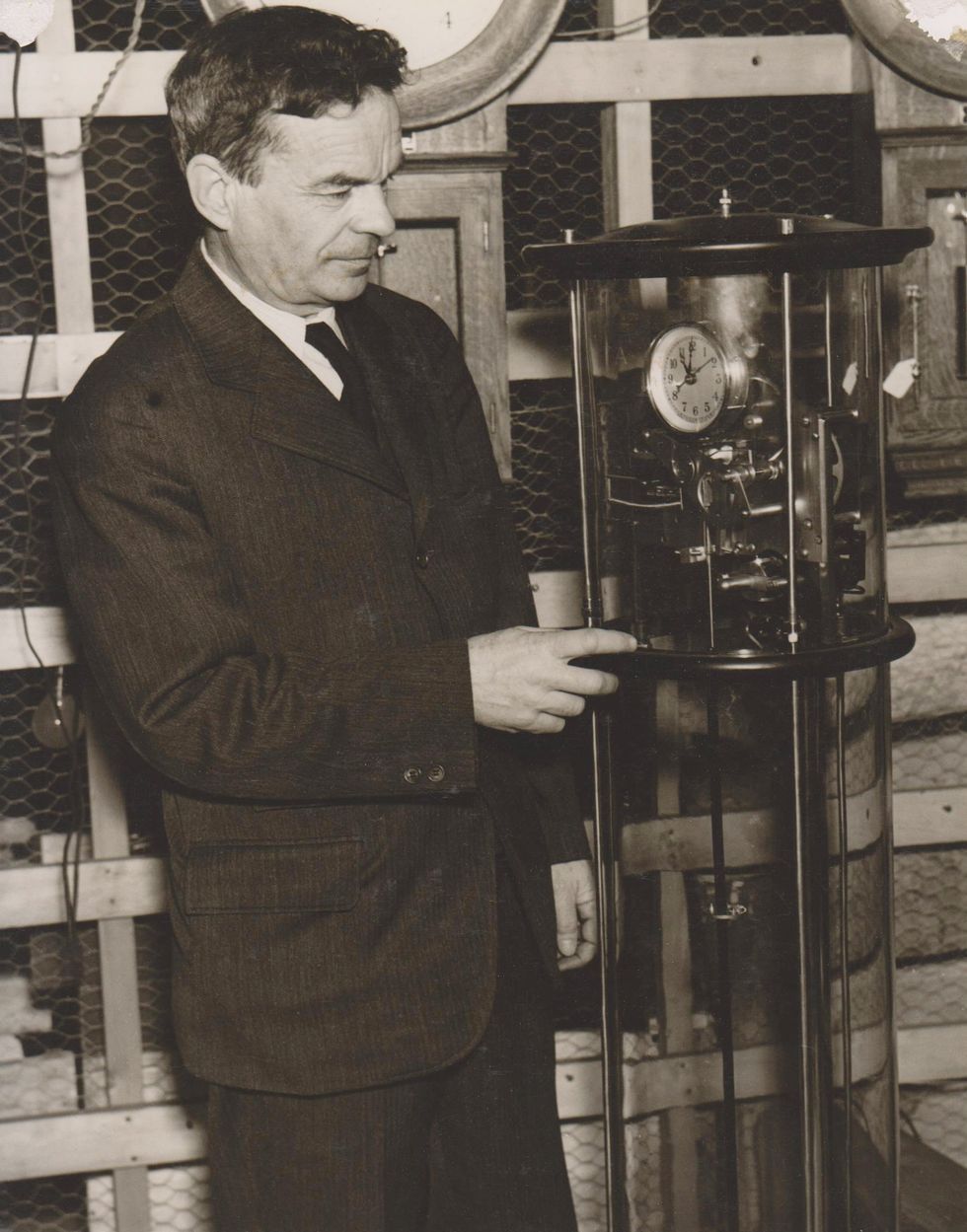
Henry Ellis Warren was born in Boston on 21 May 1872, a decade before Edison’s Pearl Street Station went online, in New York City, ushering in the dawn of the electric age. He graduated from MIT in 1894 with a degree in electrical engineering, and within the year he (along with his friend George C. Whipple, who went on to become an expert in water sanitation and to cofound the Harvard School of Public Health) had filed for their first patent: an electric thermometer intended to be used to measure temperature at a distance or in inaccessible places.
Warren went on to work in Michigan as an engineer for the Saginaw Valley Traction Co., returning to Boston in 1902 as superintendent of the Lombard Governor Co. He dabbled in real estate, set up a machine shop, continued patenting inventions, and organized the Warren Gear Works to make and sell his devices.
In 1912, Warren established the Warren Clock Co., which produced battery-operated clocks. His initial designs, as described in a series of patents, were for a pendulum clock with a permanent magnet as its bob (that’s the weight at the bottom of the pendulum). The battery would provide an electric impulse to keep the pendulum swinging, by opening and closing a circuit depending on the amplitude of the pendulum swing. Unfortunately, these early clocks were lousy timekeepers, their ability to keep time deteriorating along with the battery. Warren sought a better approach and suspected electric motors might be the answer.
In Warren’s own telling of the story, his first attempt at an electric chronometer was a crude motor that connected the gears of a clock to the Boston Edison electrical system. When he found that the clock was still losing 10 to 15 minutes a day, he called up the Edison power station—as one apparently did in 1915—and politely told them that their frequency was approximately a half cycle off. They countered that their instruments were correct, and Warren suggested the laboratory standards they used to check their meters must be in error.
The conversation could have stopped there, but Robert Hale, a research engineer, took the concern seriously and helped Warren set up an experimental demonstration at the L Street station. There, Warren designed, built, and installed the instrument he dubbed the Warren Master Station Clock. On 23 October 1916, it went into service, enabling the power transmission revolution.
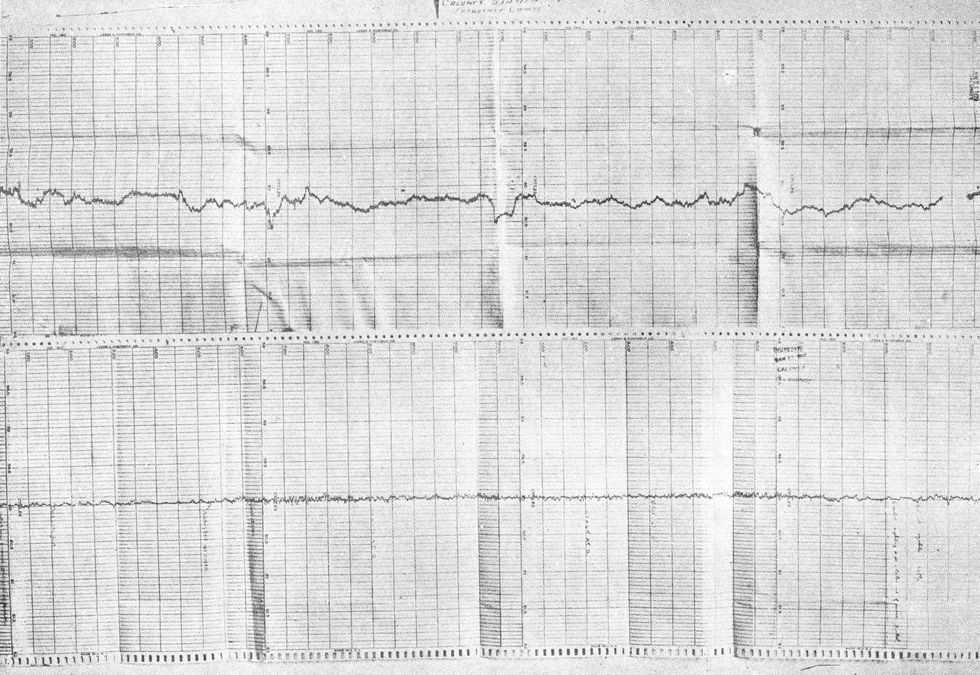
This condensed version of events belies the fact that Warren had already been working for more than a decade on ways to regulate clocks, as well as building a reliable self-starting synchronous motor. Clocks and synchronous motors go hand in hand. In a synchronous motor, the shaft rotates at the same alternating-current frequency as the electric current; assuming the current is steady, it would be ideal for a clock. But in order to make his electric clock accurate, Warren needed an accurate and steady current, hence the master station clock.
In 1916, the Warren Clock Co. began producing the Type A master station clock, which is actually two clocks superimposed on a single clock face. The dial is divided into five 1-minute sectors and has two hands, one black and one gold. The black hand is connected to a standard mechanical pendulum clock; the gold hand is driven by a synchronous motor. Both hands circle the clock face at 60 seconds per minute. To read the clock, the operator simply had to check that the two hands were in sync; that would mean the generators were running at precisely 60 hertz.
The heyday of Warren’s electric clocks
The master station clock solved Warren’s problem of creating reliable electric clocks for use in homes and appliances. But grid operators wouldn’t have embraced it but for their coalescing desire to form an interconnected electricity grid.
That desire was nicely captured by electrical engineer Benjamin Lamme in a 1918 presentation to the Washington, D.C., section of the American Institute of Electrical Engineers (one of the founding organizations of the IEEE). In his talk, “The Technical Story of the Frequencies,” he gave the history of the previous few decades, as manufacturers and power companies debated and adapted to different frequency standards.
At the beginning, when the fledgling power industry served only a few customers, there was little need for a nationwide standard. But as electricity demand rose for both industry and residences, the need became critical. Warren’s master station clock arrived at precisely the right time. (Warren was later awarded the AIEE’s Lamme Medal for his “outstanding contributions to the development of electrical clocks and means of controlling central station frequencies.”)
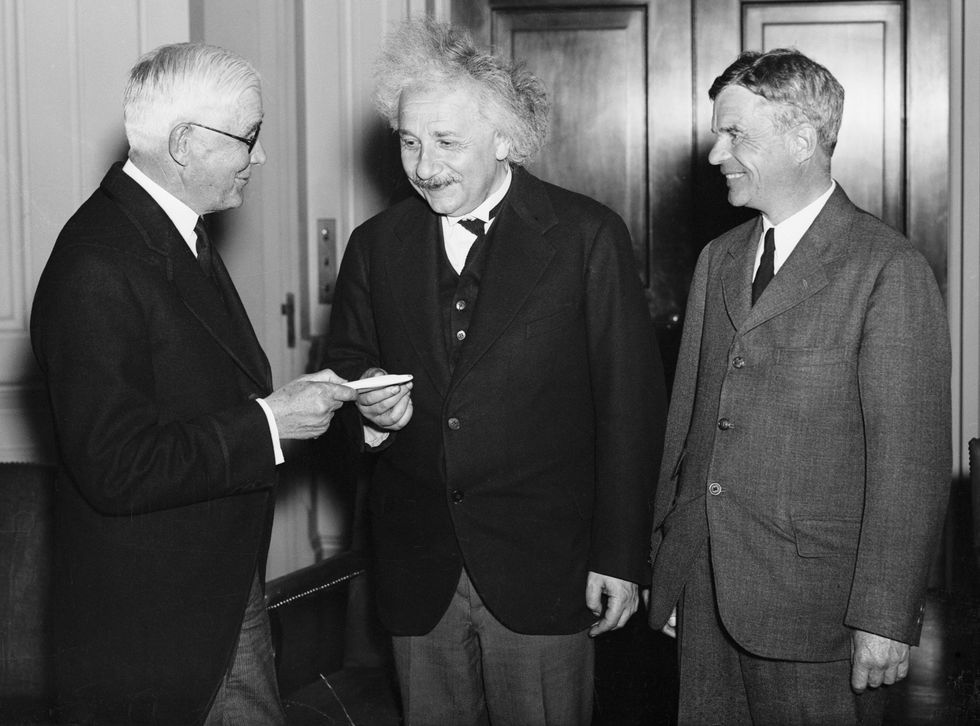
A second reason power stations adopted the master station clock was profit. Recall that Warren was initially working on an electric clock for the home, and he had a grand vision that every household would eventually own one. More electric clocks meant more electricity usage, which meant more revenue for the power companies. In a 1937 paper that Warren read before the Clock Club in Boston, he estimated that a power company could earn US $75,000 (about $1.6 million today) if 100,000 customers each ran an electric clock 24 hours a day. Warren was thinking big for his own company and wanted to get the utilities on board.
There were several versions of the station clock. In 1920, the cheaper (and less accurate) Model B master station clock was introduced for stand-alone installations not connected to a wider electrical grid. The following year, the company unveiled the Type C clock for use in the few remaining DC power stations. According to the incredibly informative website maintained by clock enthusiast Mark Frank, the Type D existed as an internal testing device and never went into production. The final model, the Type E, came out in 1929. It functioned as a reference monitor for multiple interconnected grids.
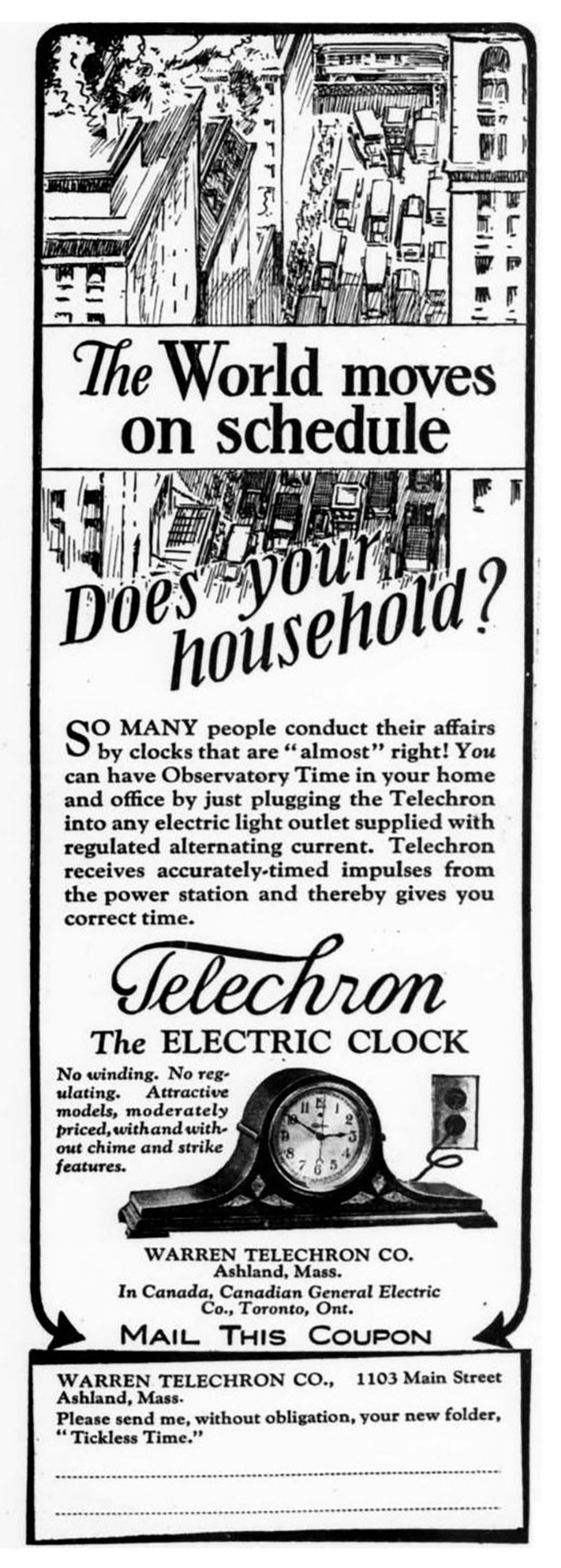
Beginning in the 1950s, improved electronics displaced electromechanical master station clocks. These days, power stations use atomic clocks to regulate grid frequency.
Back in 1917, General Electric had bought a 49 percent interest in the Warren Clock Co. Warren continued to serve as president until he retired in 1943. GE incorporated Warren’s self-starting synchronous motors into its own clocks and other instruments and licensed the motors to other companies. In 1926, the company was renamed the Warren Telechron Co. After Warren’s retirement, GE fully absorbed Telechron into its operations, eventually forming the Clock and Timer Division.
In its heyday, Telechron held a huge share of the home electric clock market—by 1926 the company had sold 20 million clocks. But by the 1950s, clocks with improved batteries and oscillating quartz crystal resonators began to replace consumer electric clocks that synchronized with the power grid. The advent of digital clocks sealed the deal. GE sold its last Telechron plant in 1979.
Today, the Telechron legacy lives on at the Electric Time Co., in Medfield, Mass., which was spun off from Telechron’s research labs in 1928. Today, Electric Time custom-manufactures tower clocks, street clocks, and building clocks. It also hosts the Electric Clock Museum, where you can make an appointment to see the Telechron Type E Master Station Clock.
Part of a continuing serieslooking at historical artifacts that embrace the boundless potential of technology.
An abridged version of this article appears in the March 2024 print issue as “The Clock and the Grid.”
References
Clock collectors have done a significant amount of work gathering historical source material about clocks. In particular, Mark Frank’s website, Magnificent Time Machines, was essential in explaining the different types of Warren station clocks. He even has the instruction manual for the Type E! Also consider heading to the website of the National Association of Watch and Clock Collectors for any additional questions.
It is always nice to read an inventor’s own words, and Henry Warren presented “ Utilizing the Time Characteristics of Alternating Current,” in 1919, to the Boston Section Meeting of the AIEE, explaining the self-starting synchronous motor and the station clock.
Jim Linz’s Electrifying Time: Telechron and G.E. Clocks 1925–1955 (Schiffer Publishing, 2000) is the definitive book on Warren clocks, documenting over 700 models of Telechron and GE clocks.
For understanding the entire process of electrifying the United States, and Europe, Thomas Hughes’ Networks of Power (Johns Hopkins University Press, 1983) is a classic.
- Meet the Guy Whose Software Keeps the World’s Clocks in Sync ›
- To Free the Baltic Grid, Old Technology Is New Again ›
- Planned U.S. Power System Experiment Means Some Clocks Will Speed Up ›
- Synthetic Power Grid Is Safer Than the Real Thing - IEEE Spectrum ›
Allison Marsh is a professor at the University of South Carolina and codirector of the university's Ann Johnson Institute for Science, Technology & Society. She combines her interests in engineering, history, and museum objects to write the Past Forward column, which tells the story of technology through historical artifacts.
